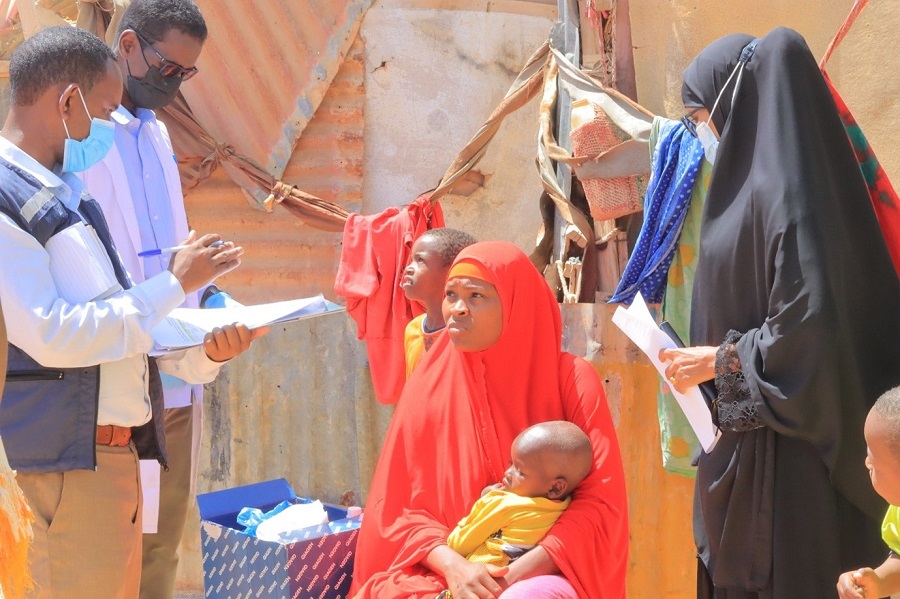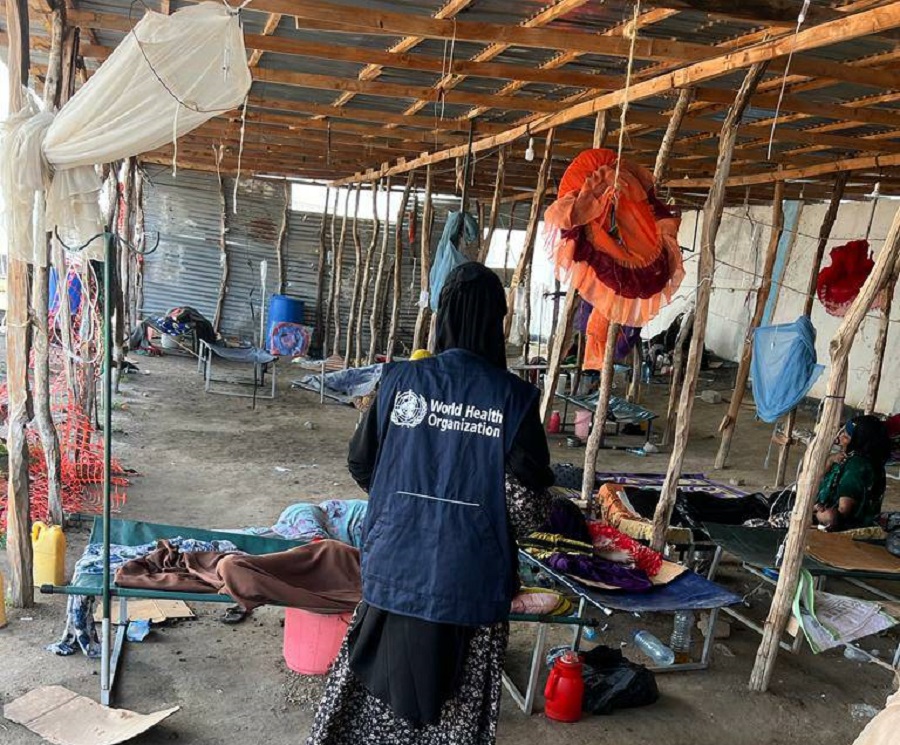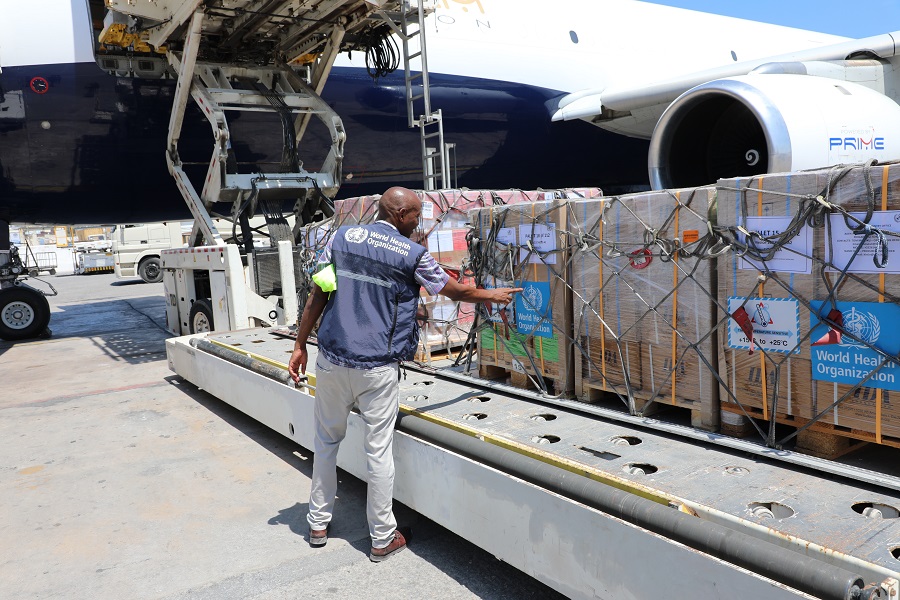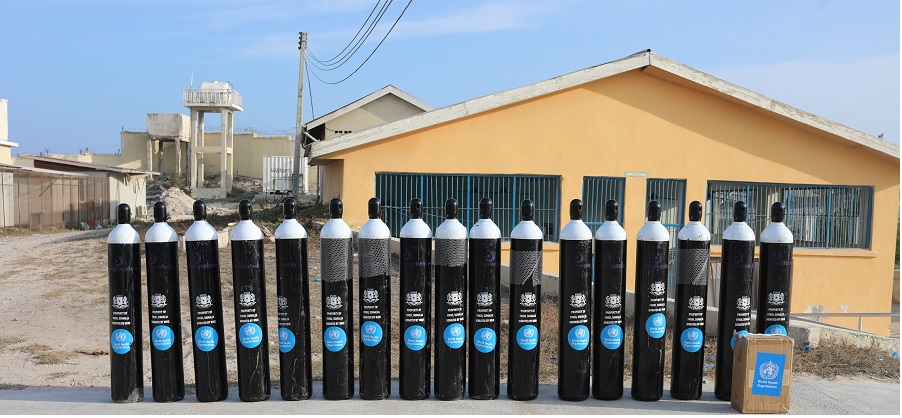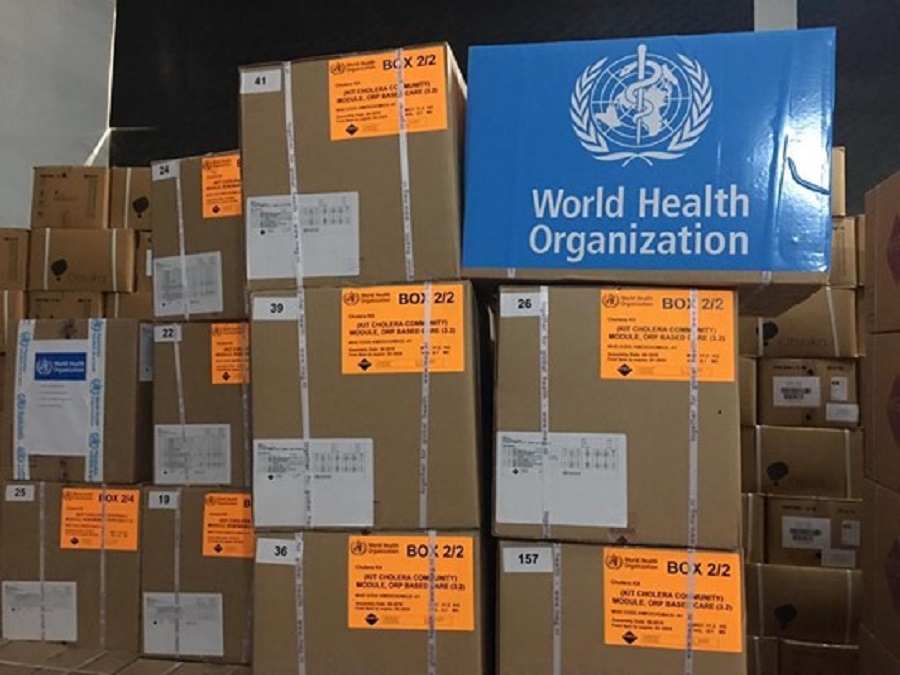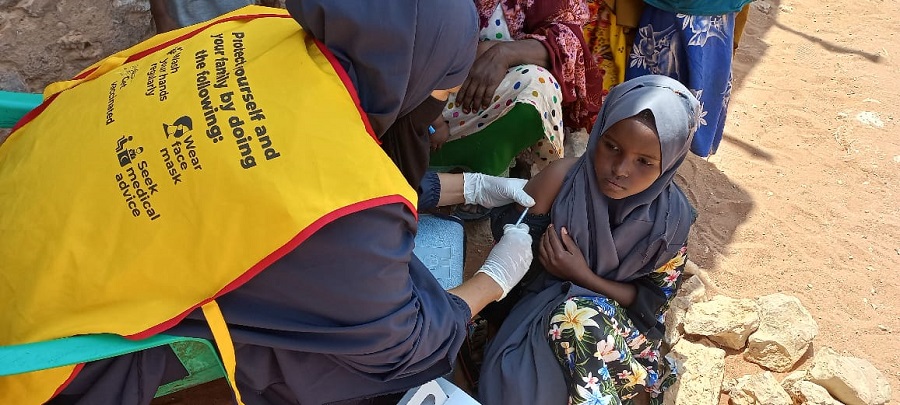 Vaccinators continue to save children from vaccine preventable diseases across Somalia. Credit: WHO/Somalia
Vaccinators continue to save children from vaccine preventable diseases across Somalia. Credit: WHO/Somalia
Mogadishu, 24 April 2023 – The Federal Ministry of Health, in collaboration with the World Health Organization (WHO) and the United Nations Children’s Fund (UNICEF), observed World Immunization Week under the global theme of “The Big Catch-Up” with a resolve to strengthen primary health care and routine immunization across the country and ensure that no one is left behind.
World Immunization Week 2023 is being observed during the global COVID-19 pandemic and hence it has been given the theme of ‘The Big Catch-Up’. World Immunization Week was initially endorsed in May 2012 by the World Health Assembly (WHO's decision-making body) and the first World Immunization Week was observed the same year across 180 Member States of WHO.
The Federal Minister for Health Dr Ali Haji, on this occasion expressed gratitude to WHO and UNICEF for coordinating and collaborating with multiple partners and helping his government to catch up on lost progress in essential immunization, as a result of the global pandemic. Acknowledging the worst ever drought gripping the country, resulting in huge population displacement and outbreaks of diseases, Dr Haji hoped that “in line with the theme of the year -“The Big Catch-Up”, WHO and UNICEF would continue to support the Ministry of Health in building a strong immunization delivery system, sustain the progress made over the past few years in preventing a backslide of childhood immunization in the country and more importantly accelerate the campaign of “The Big Catch Up” to get back on track to ensure more people, particularly children, are vaccinated and protected from preventable diseases”.
As per UNICEF and WHO estimates, routi:ne immunization coverage in Somalia is low compared to other countries, and has been further impacted by the COVID-19 pandemic. The Ministry of Health, in collaboration with WHO and UNICEF, has made progress during 2022 to bridge these significant gaps in immunization by scaling up its efforts to strengthen routine immunization across the country.
WHO Representative to Somalia Dr Mamunur Rahman Malik while referring to the setbacks caused by global pandemic to routine immunization in Somalia, said that “Thousands of children under 5 have missed routine immunization during the past 3 years. The pandemic has disrupted essential immunization services in the country. We may anticipate a backslide of over 20% in routine immunization coverage unless we are able to rapidly catch up on lost progress.” He further said that, “WHO in collaboration with the Ministry of Health and UNICEF, is planning for a “Big Catch-Up” by developing an immunization recovery plan to catch up on all those children who have missed out on their routine immunization in the past 3 years, including all women of childbearing age and adults. This is our chance to restore immunization coverage to pre-pandemic levels and by working together with our partners, we can do it.”
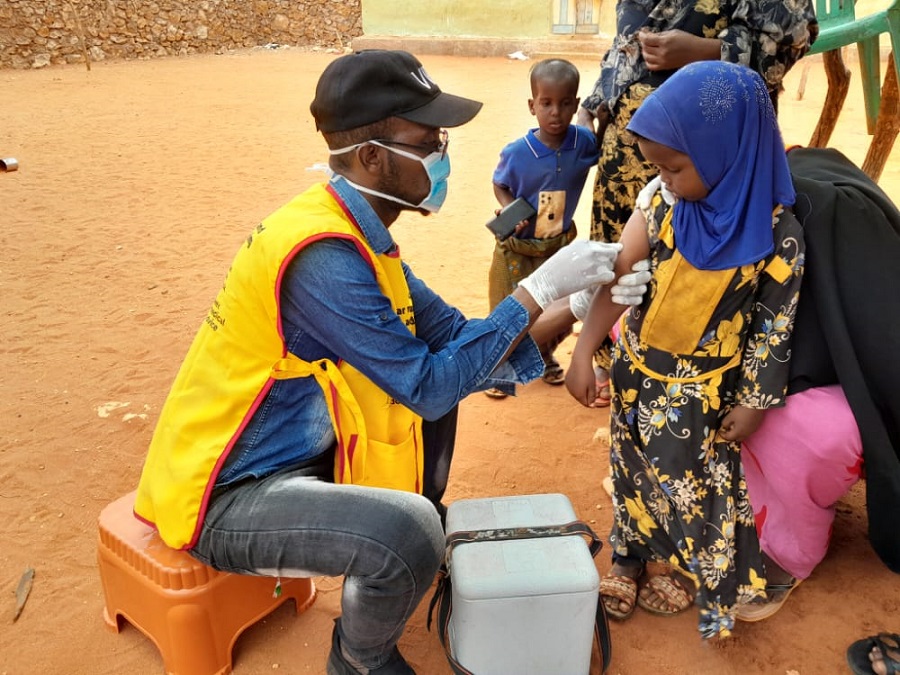 Locally recruited vaccinators are trusted members of communities across Somalia. Credit: WHO/Somalia
Locally recruited vaccinators are trusted members of communities across Somalia. Credit: WHO/Somalia
The Federal Ministry of Health, WHO and UNICEF during 2022 have jointly implemented 4 rounds of accelerated immunization activities, 5 polio campaigns, 8 campaigns for COVID-19, and nationwide integrated measles, tOPV, vitamin A and deworming campaigns. Additionally, WHO deployed more than 2100 community health workers while UNICEF has deployed over 6000 social mobilizers across the country to disseminate health messages to over 4.5 million people, as well as track and help immunize children who missed out on immunization. The community health workers have been working to find, register and refer the missed-out children and pregnant women to nearby health facilities and outreach sessions.
“UNICEF supports health systems for increasing routine immunization and integrated health and nutrition services to the children in Somalia, especially where coverage is low in hard-to-reach areas,” said UNICEF Deputy Representative, Nejmudin Kedir Bilal. “We are committed to continuing to support the Ministry of Health to generate more demand and acceptance of vaccines by the communities; to strengthen supply chain management system for vaccines and supplies; and to revamp management information system to track zero-dose children.”
The joint efforts made by the Ministry, WHO and UNICEF during the last integrated campaign helped to vaccinate more than 3.2 million children under 5 against measles and 3.5 million against polio. During 2022, immunization programmes also identified and vaccinated over 84 500 zero-dose children and vaccinated around 30 000 women of childbearing age with tetanus-diphtheria toxoids (Td2) by deploying integrated outreach teams. Somalia also managed to achieve the milestone of fully vaccinating over 41.7% of the adult population against COVID-19 in 2022.
Note to editors
Since the start of the COVID-19 pandemic in 2020, a widespread decline in childhood vaccinations has occurred globally, putting millions of additional children at risk for vaccine-preventable diseases. The continued decline in vaccination coverage since then was likely a result of many factors, including strained health systems caused by the COVID-19 pandemic, coupled with the primary focus being on the delivery of COVID-19 vaccines. These stresses have led to challenges with supply chains, human resources, and financing. Increasing vaccine misinformation, disinformation and hesitancy also likely contributed to declines in some countries. The risk of vaccine-preventable disease outbreaks is likely to persist if urgent action is not taken to recover immunization programme losses, especially in countries like Somalia, where the health sector is under immense stress of dealing with multiple outbreaks of measles, cholera and circulating vaccine-derived poliovirus 2.
-------------------------
For additional information, please contact:
Federal Republic of Somalia Ministry of Health and Human Services
هذا البريد محمى من المتطفلين. تحتاج إلى تشغيل الجافا سكريبت لمشاهدته.
UNICEF
Lisa Hill
Communications Specialist
هذا البريد محمى من المتطفلين. تحتاج إلى تشغيل الجافا سكريبت لمشاهدته.
WHO
Fouzia Bano
Communications Officer
هذا البريد محمى من المتطفلين. تحتاج إلى تشغيل الجافا سكريبت لمشاهدته.
------------------------
Related links
Expanded Programme on Immunization
State of the World’s Children 2023: For Every Child, Vaccination





